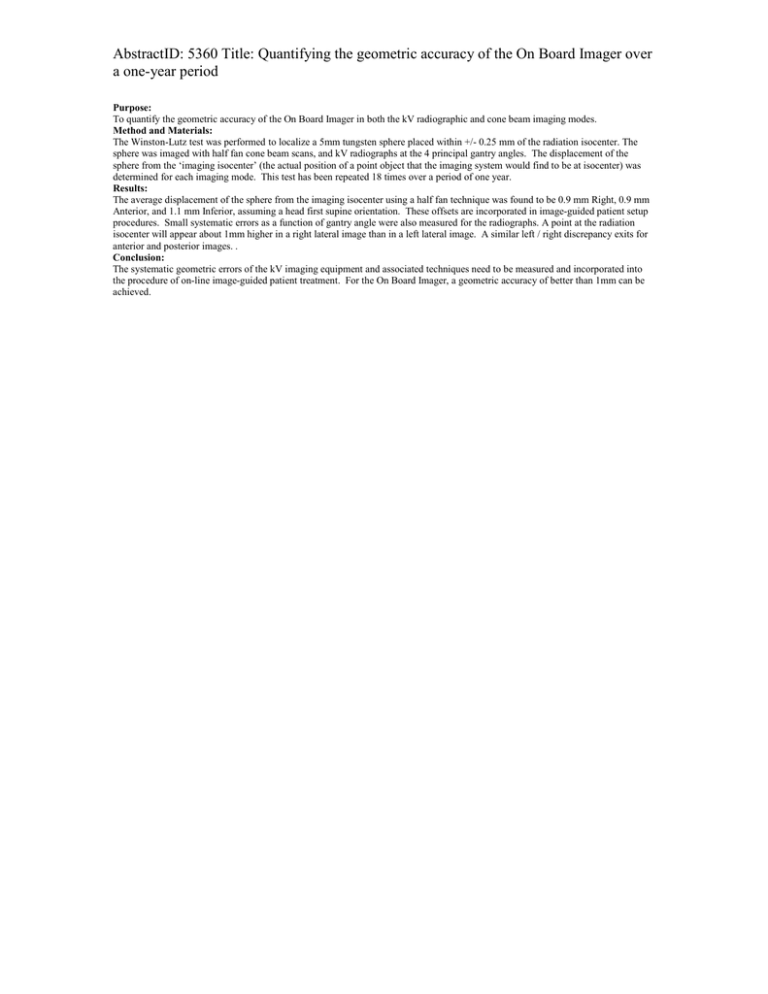AbstractID: 5360 Title: Quantifying the geometric accuracy of the On... a one-year period
advertisement

AbstractID: 5360 Title: Quantifying the geometric accuracy of the On Board Imager over a one-year period Purpose: To quantify the geometric accuracy of the On Board Imager in both the kV radiographic and cone beam imaging modes. Method and Materials: The Winston-Lutz test was performed to localize a 5mm tungsten sphere placed within +/- 0.25 mm of the radiation isocenter. The sphere was imaged with half fan cone beam scans, and kV radiographs at the 4 principal gantry angles. The displacement of the sphere from the ‘imaging isocenter’ (the actual position of a point object that the imaging system would find to be at isocenter) was determined for each imaging mode. This test has been repeated 18 times over a period of one year. Results: The average displacement of the sphere from the imaging isocenter using a half fan technique was found to be 0.9 mm Right, 0.9 mm Anterior, and 1.1 mm Inferior, assuming a head first supine orientation. These offsets are incorporated in image-guided patient setup procedures. Small systematic errors as a function of gantry angle were also measured for the radiographs. A point at the radiation isocenter will appear about 1mm higher in a right lateral image than in a left lateral image. A similar left / right discrepancy exits for anterior and posterior images. . Conclusion: The systematic geometric errors of the kV imaging equipment and associated techniques need to be measured and incorporated into the procedure of on-line image-guided patient treatment. For the On Board Imager, a geometric accuracy of better than 1mm can be achieved.

